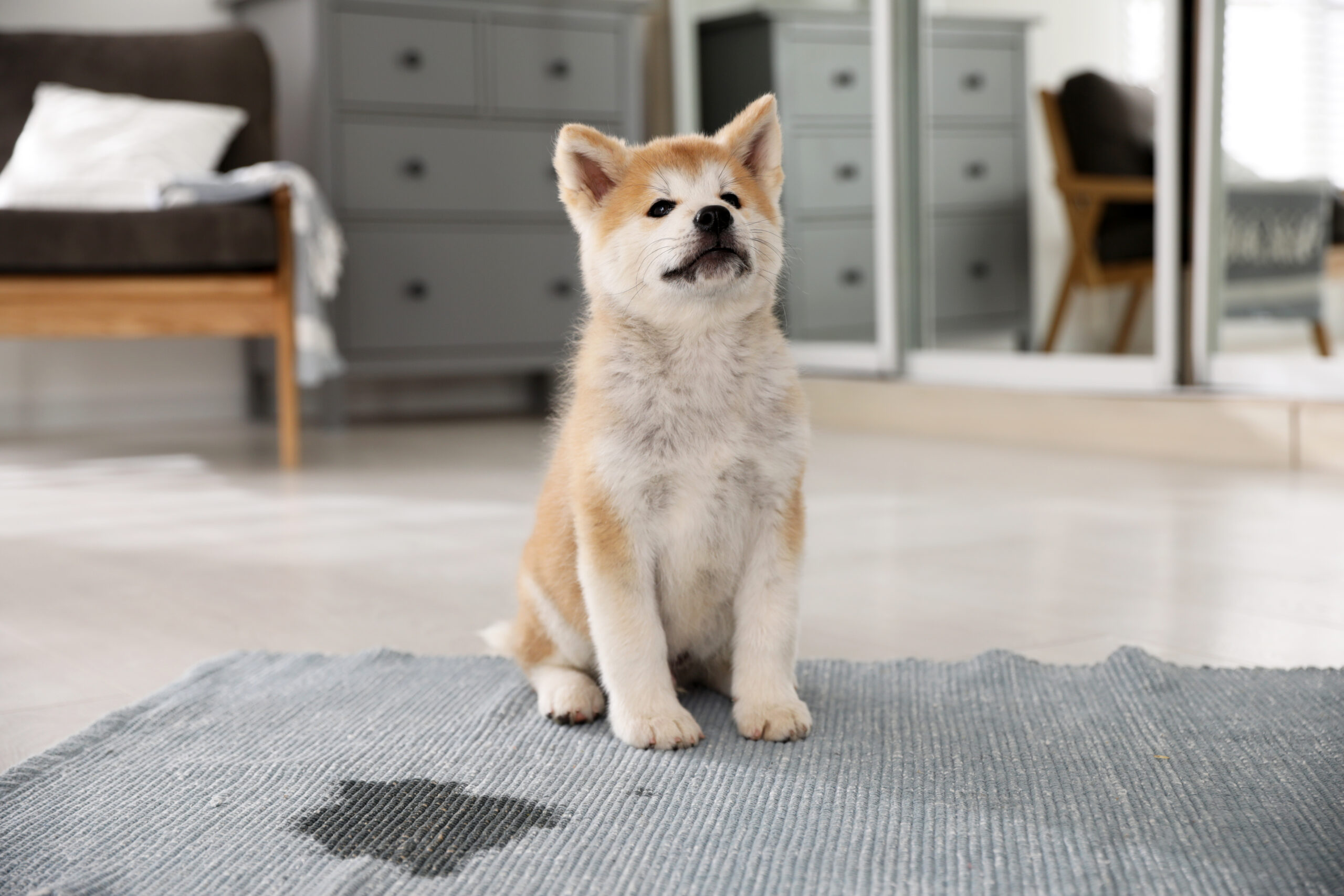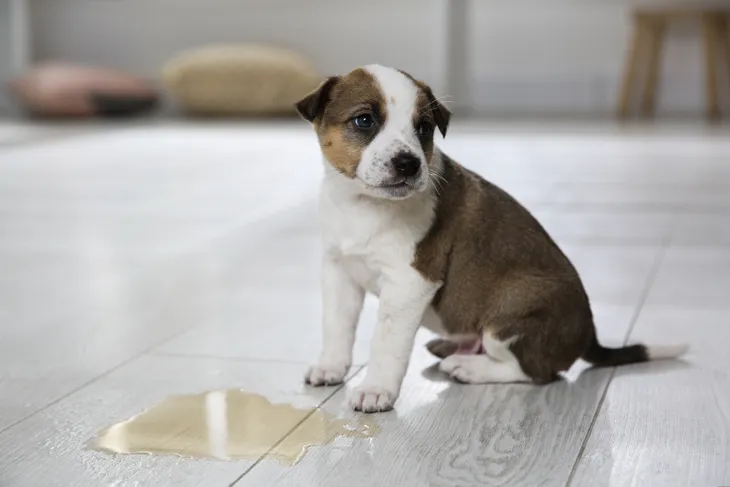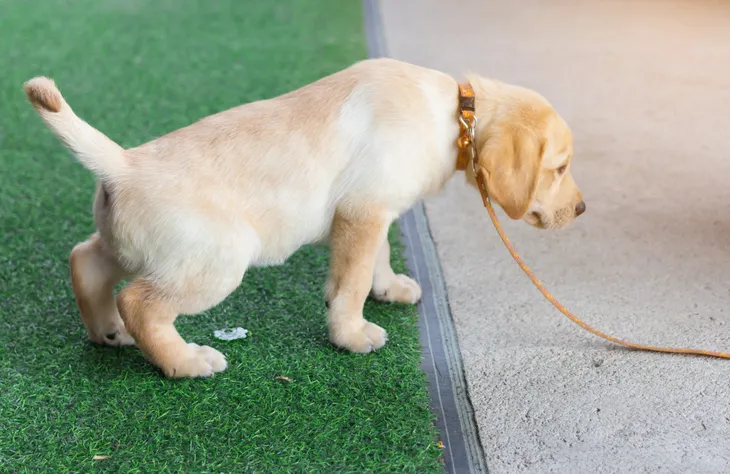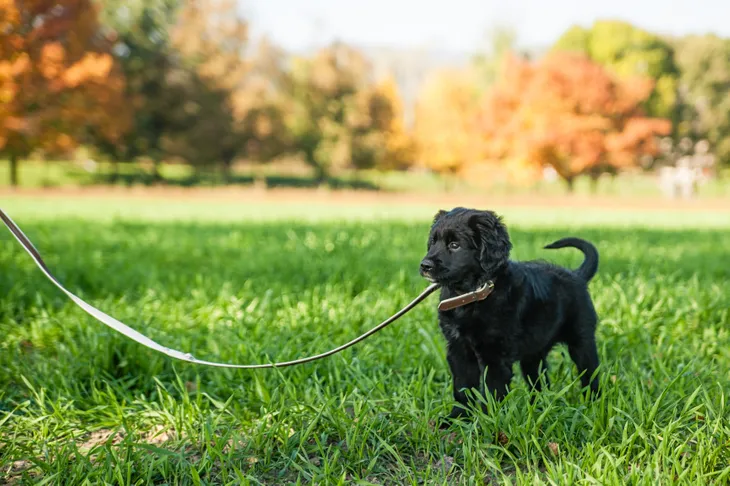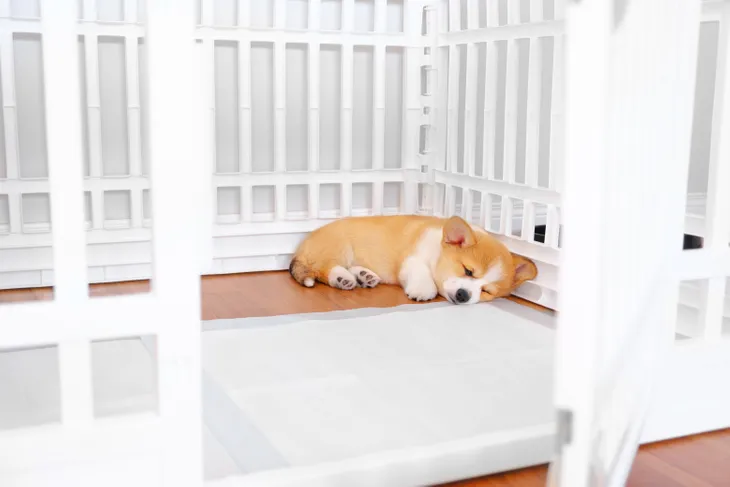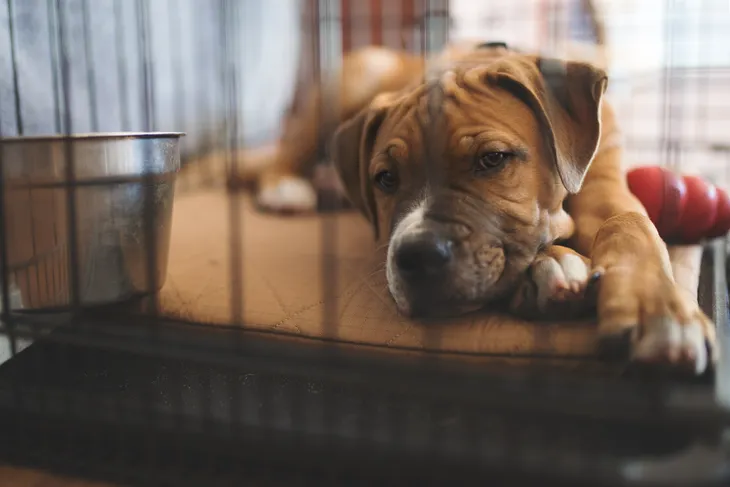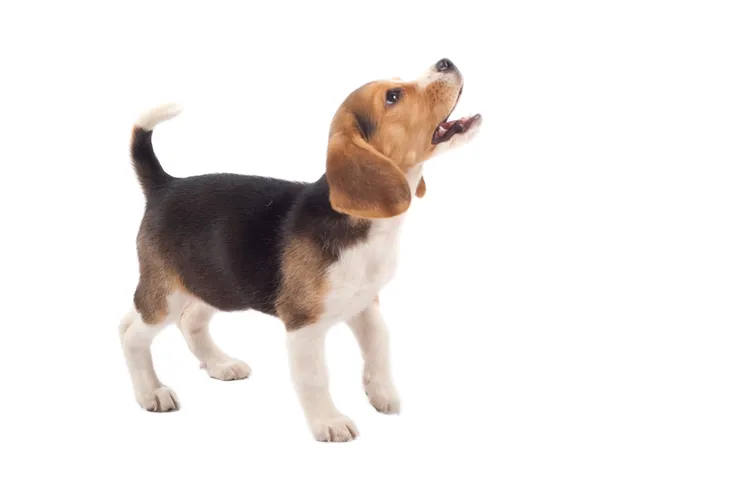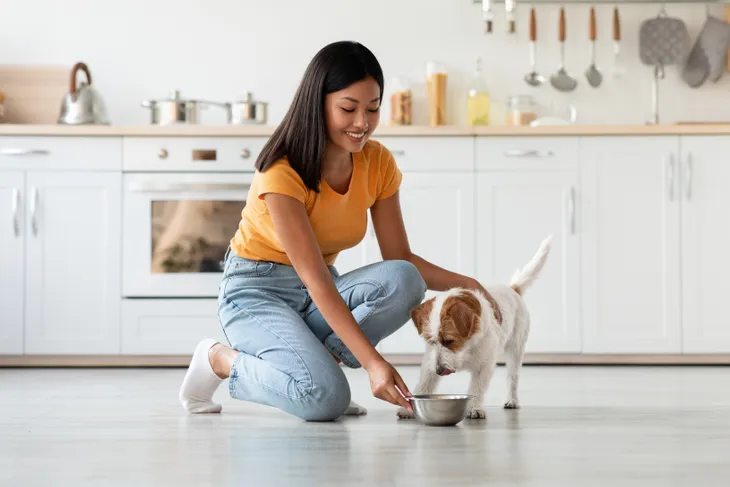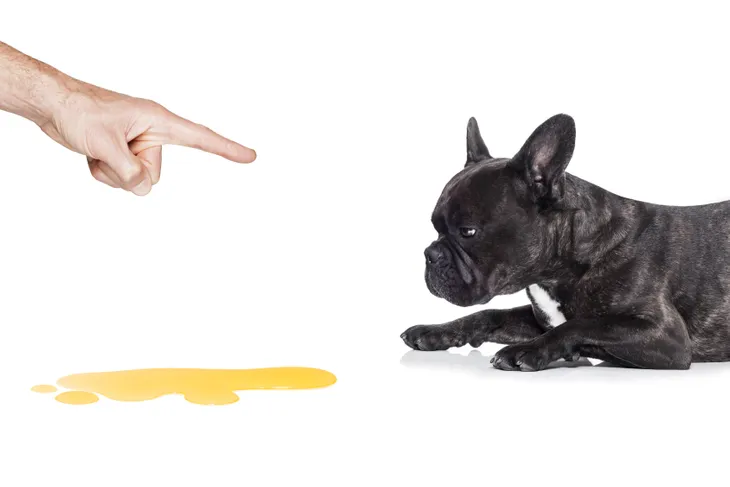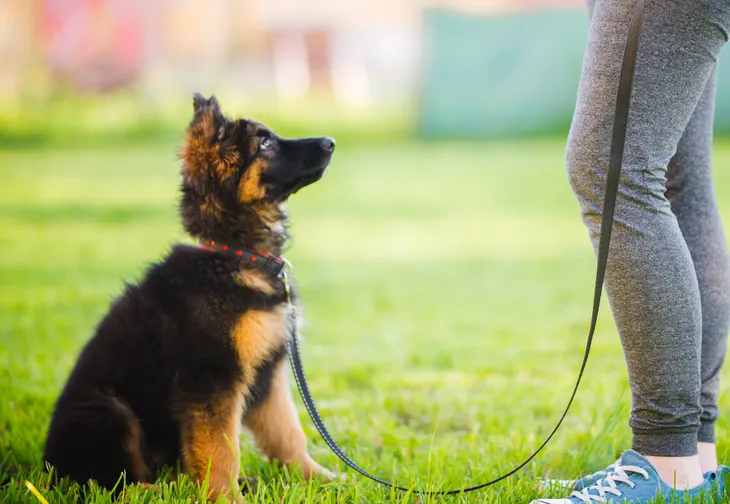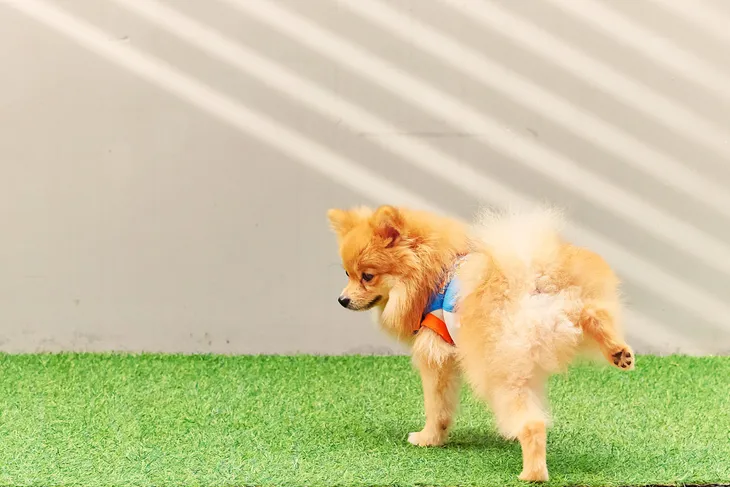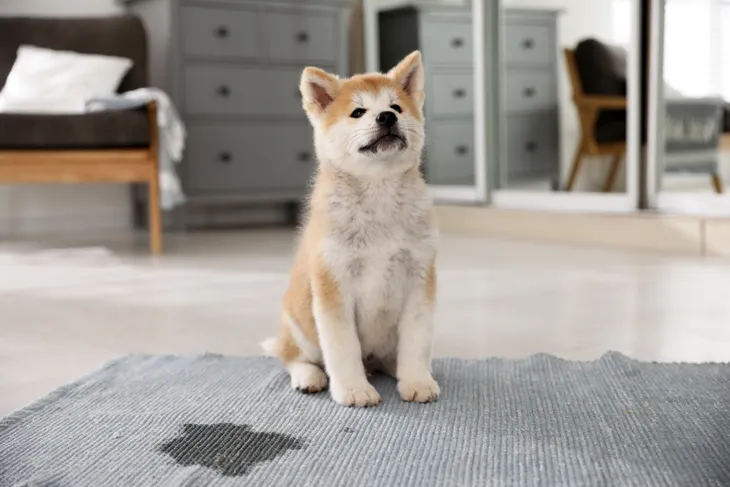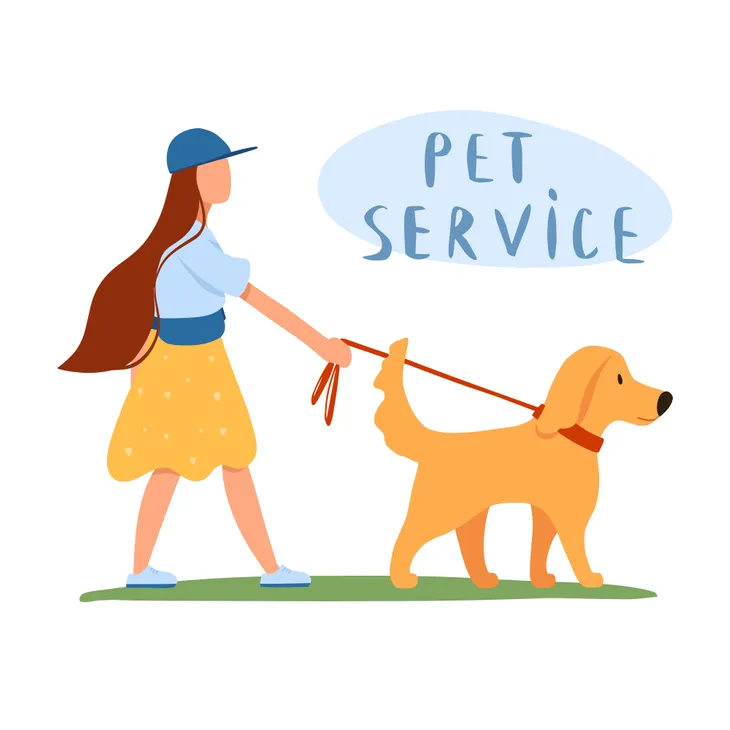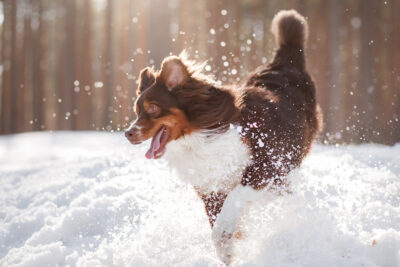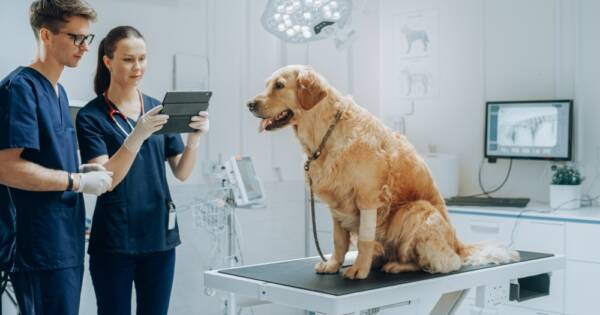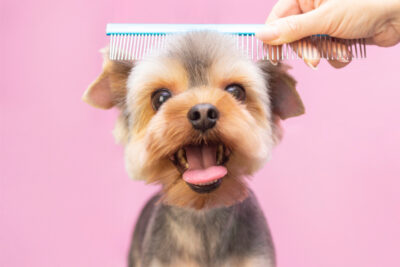- Potty training a puppy requires a lot of patience, consistency, and hard work — but it’s not impossible!
- Start by offering them frequent potty breaks and confining them to a small area. Give them lots of praise when they go outside or in their designated area.
- Establish a schedule so that they know when to expect their next potty break and familiarize yourself with signs that they need to go.
- Expect a few setbacks along the way during the first year of potty training. Don’t get discouraged. Stay as consistent as possible.
There aren’t many sweeter things in this world than an adorable little puppy, but the mess that comes with them is not so cute! Luckily, it’s just temporary. Potty training a dog can seem like a daunting and overwhelming task. And while there’s no denying it’s a lot of work, it can be done. It requires a great deal of patience, consistency, and commitment. The goal is to establish good habits and hopefully, a loving bond between pet and owner.
Owning a puppy is very rewarding, especially with all those cuddles! It also comes with a great deal of responsibility. As their owners, our pets rely on us to teach them right and wrong. The first couple weeks (or months) with a puppy are the hardest because that’s when all the groundwork for their training is laid down. To learn more about potty train your puppy, check out this complete guide with all the tips and tricks for success…
When to Start House Training a Puppy
If possible, it is best to start training when they are young and impressionable. Not to mention, the younger they are, the more frequently they will have to relieve themselves. However, it’s not as simple as starting from birth. According to Petsmart, there’s a lot of physical development that has to take place before a puppy can control their bathroom needs. In the first couple weeks of their life, they need to focus on growing and building strength in their bladder and bowels.
A puppy can start basic potty training at four weeks old, says Petsmart. Most pet owners will take their puppy home at around eight weeks old. At this stage, they still can’t hold their bladder for very long, so any training will require a lot of work. Frequent trips to the potty area are necessary. WebMD for Pets suggests waiting until 12 weeks old to really get into more advanced potty training because this is when they’ll have more control of their bladder and bowel movements.
Frequent Potty Breaks
Puppies have tiny bladders and need lots of potty breaks in the first couple months. Give them ample opportunity to do the right thing by offering frequent potty breaks. In the very beginning, WebMD for Pets suggests taking them outside first thing in the morning, and then every 30 minutes to an hour after that. Always take them out after waking up from a nap, eating a meal, and of course, before bed. As they get older and begin to catch on, the time between breaks can slowly increase.
Use their age as a guideline of how long to leave them between potty breaks. The number of hours corresponds to their age in months, says American Kennel Club. For example, a four month old puppy should be able to hold his bladder for about four hours. Follow this rule up until nine months old to a year. Keep in mind that 10-12 hours is a long time for anyone to hold their bladder and that all puppies are different. The timing may differ slightly depending on the dog.
Establish a Routine
You’ll want to establish a routine as soon as possible. Puppies work best on a regular schedule, notes the Humane Society. This will teach them when to eat, when to play, and when to do their business. They’ll eventually learn when to anticipate a bathroom break and once they are physically able to do so, they can hold their bladder until the next potty break.
The American Kennel Club suggests monitoring their habits in order to set up a schedule around their needs. Expect to take them out: “first thing in the morning, last thing at night, after playing indoors, spending time in crate, upon waking up from nap, after chewing a toy or bone, as well as after eating and drinking.”
Another important part of the routine is to take them (on a leash) to the same spot every time. Their scent will prompt them to go. Supervise them outside while they are learning to ensure that they go. “While your puppy is relieving themselves, use a specific word or phrase that you can eventually use before they go to remind them what to do,” writes the Humane Society.
Supervise or Confine
In the first couple weeks of their life, puppies cannot hold their bladder or bowel movements for long periods of time. It’s recommended when potty training to constantly supervise them. When this isn’t possible, confine them to a small area. This could be a crate, room, or even on a leash. Once they learn that they go outside to do their business, you can gradually give them more freedom to roam about the house.
If accidents do happen, clean them up with an enzymatic cleanser rather than an ammonia-based cleaner. This will help minimize the oder which could attract them back to that same spot, says WebMD for Pets.
Using a Crate for Housetraining
Crates are the number one tool for housetraining a puppy, at least in the beginning. It limits their ability to have accidents around the house and allows you to keep an eye on them. When choosing a crate, pick one that is big enough so that they are comfortable. They should be able to stand up, turn around, and lie down. But don’t get one that is too big. They’ll end up using a corner as a bathroom.
If the crate is being used for longer than two hours, make sure they have water. If you’re not going to be home (i.e. at work for periods of time) during the first eight months, make sure someone is available to come give them a break throughout the day. According to the Humane Society, puppies under six months of age shouldn’t be in the crate for longer than three or four hours at a time. Before using a crate for training, research how to humanely use a crate.
If they start eliminating in the crate, don’t use it. If a pet is eliminating in their crate on a regular basis, it could be for other reasons, such as bad habits from the shelter or pet store, not enough outside time, crate is too big, or they are too young to hold it, says WebMD for Pets.
Using Puppy Pads and Paper Training
Puppy pads and paper training is another common potty training method. Mary Burch, Ph.D., director of the AKC’s Canine Good Citizen and S.T.A.R. Puppy Programs warns that these methods can be “tricky because you’re reinforcing two different options for the puppy.” Ideally, most people want their dog to hold it and relieve themselves outdoors. However, this skill doesn’t happen overnight.
Puppy pads and paper training can be a desirable option for certain situations, like when a person can’t get home in time to let their dog out several times a day. People who live in apartment buildings or in an area where winters are harsh.
Signs They Have to Go!
When potty training a puppy, it’s important to know the signs that they need to eliminate. Once they start catching on to the training and learning they aren’t supposed to go inside, they’ll start giving you indicators that they have to go. It’s your responsibility to pick up on these cues and act quickly.
Some of the most typical indicators will be whining, circling, sniffing, barking, or if they’re confined to a small area, they might bark or scratch at the door. If you see any of these signs, take them outside right away, says WebMD for Pets.
Control Their Diet
Puppies have immature digestive systems which means they can’t handle a lot of food. You’ll need to limit their food intake by breaking up their feeding schedule into three small meals, says the American Kennel Club. A major benefit of controlling their diet is that it also controls the amount of potty breaks. Feeding them at the same time each day will make it more likely that they’ll eliminate at consistent times. You’ll be able to anticipate when they need a potty break and hopefully limit the number of accidents.
Another good tip to follow is to take their water dish away two hours before bedtime. This will reduce the likelihood that they’ll need to relieve themselves in the night, says the Humane Society. Once they are past those first couple months, most puppies can sleep for seven hours at night. If they do get up in the night, don’t make a big deal of it. Limit the amount of lights and don’t talk or play with them. Take them out to their designated potty area, then head back to bed.
Use Praise
Use verbal praise or treats to reward a puppy for going to the washroom outside. Make sure to do it right as they’ve finished and not after they come back inside. Praise is a very important part of potty training a puppy because it’s how they know when they’ve done something right, says the Humane Society. “Before rewarding, be sure they’re finished,” notes the source. “Puppies are easily distracted and if you praise too soon, they may forget to finish until they’re back in the house.”
In addition to verbal praise or using treats, WebMD for Pets suggests offering a walk around the neighborhood is another form of praise. You can also give them physical affection by scratching behind their ears or petting them.
Don’t Use Punishment or Scolding
On the flip side of this, do not punish or scold a puppy when they have an accident. Especially after the fact. It’s hard not to get upset or frustrated, but remember it doesn’t teach them anything except to fear you, says WebMD for Pets. “If you found the evidence but didn’t see the act, don’t react angrily by yelling or rubbing their nose in it. Puppies aren’t intellectually capable of connecting your anger with their accident,” writes the source.
If you do happen to catch them in the act, clap loudly so that there’s a negative association with doing the act where they aren’t supposed to. Then gently take them outside. When they are finished outside, give them praise or a treat.
Be Consistent
Consistency has come up a number of times already and that’s because it’s a very important aspect of potty training. This rule is more for the pet owner than for the dog. The success of potty training is just as much on the owner as it is the dog because they rely on us to teach them. If we’re not consistent in our methods, then the puppy will become confused.
Petsmart warns that puppies need to be taught things over and over again until it sticks. This means routine, consistency, and lots of patience is required from the owner. It can be difficult to remain consistent, especially in the beginning when you’re not getting enough sleep or the number of accidents outweighs the number of successful potty breaks. But potty training takes time and consistency is key.
How Long Will It Take?
This depends on the dog and many factors including age, history, methods, and consistency. You play a major role in the results of potty training a puppy. Typically, it takes between four to six months to fully potty train a puppy, says WebMD for Pets. In some cases it can take as long as a year! Smaller dogs are known to take longer because they have smaller bladders and a higher metabolism which means they require more frequent trips outside.
Another factor that can influence how long it might take are their previous living conditions. “You may find that you need to help your puppy break old habits in order to establish more desirable ones,” says the source.
Potential Setbacks
Don’t get upset or discouraged if there are setbacks during their potty training. In fact, WebMD for Pets says to expect them from time to time in puppies up to a year old. “As long as you continue a management program that includes taking your puppy out at the first sign they need to go and offering them rewards, they’ll learn,” writes the source.
If a puppy continues to have frequent accidents take some time to reflect on what you could’ve done better. Are they being given enough potty breaks? Have you been consistent with house training? Has there been any changes to their environment recently? Keep training if accidents continue to happen. Supervision and confinement are extremely important aspects of potty training. Frequent accidents in the house will start to cause confusion for them about where they’re supposed to go.
If you’re really concerned about frequent or unexplainable setbacks, take them to a veterinarian to rule out a medical issue, notes the source.
Make Plans for When You’re Away
This should go without saying, but don’t get a puppy if you know you’re going to be away from home frequently or for long periods of time. Expect to take some time off work because they require a lot of hands on work. You’ll likely have a couple sleepless or restless nights. As previously mentioned, during the first couple weeks they need potty breaks every 30 minutes to an hour. This means waking up every couple hours in the night to let them out.
Understandably, most people will eventually have to return back to work. If that’s the case, arrange for someone reliable to stop by and take them for bathroom breaks. This could be a neighbor, family member, or professional pet sitter. Returning to work too soon or leaving them for long periods of time before they are ready will result in accidents which will only postpone the potty training process.
